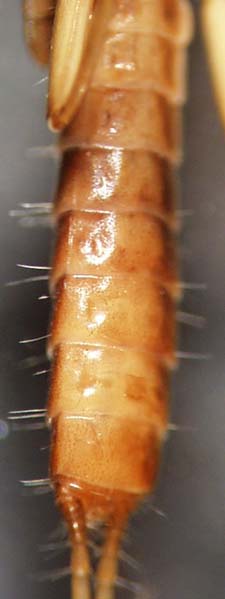
THE XERCES SOCIETY FOR INVERTEBRATE CONSERVATION Aquatic Invertebrates in Pacific Northwest Freshwater Wetlands |
| Identify taxa |
Capniidae |
|||
|
These sensitive stoneflies live in a wide range of relatively undisturbed aquatic habitats. One species (Utacapnia tahoensis) spends its entire life cycle (larva and adult) deep in Lake Tahoe. They are an ecologically important group for their role in tearing apart leaf litter and other organic debris. Some even have specific preferences in the types of plant matter they ingest. Most adults emerge during the cold months. Adults are often found wandering on the snow and are thought to eat algae and withstand the cold by seeking refuge in small burrows in the snow. Capniid larvae usually have a more bulbous abdomen than Leuctridae (needleflies) and have pleural folds on all but the last abdominal segment (9 total; never more than 7 in needleflies). |
|
Size: medium Identifying feature(s): bulbous abdomen; pleural folds on all but the last abdominal segment Habitat: diverse flowing waters, some well oxygenated lakes Tolerance to pollutants: moderate |
 |
|
© 2007 Xerces Society
Contact info@xerces.org

